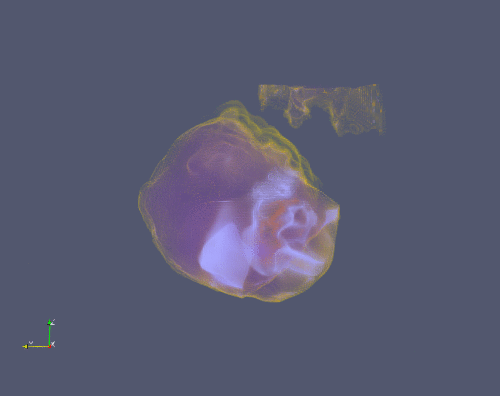Optical emission from supernova remnants: geometry matters!
Ekaterina Makarenko
Supernovae are one of the main drivers of evolution in galaxies and the whole interstellar medium. Their remnants emit across the entire wavelength range. But it is only when the dense, shocked gas has cooled, that you can observe optical emission using different filters to get the emission in key optical lines (e.g. [O III], [S II], etc.). Usually, it happens in the later stages of evolution, and these observations are rare. First of all, interstellar medium extinction is significant at optical wavelengths. Second, observable optical emission only occurs when high-density gas is shocked. However, despite the difficulties of observing supernova remnants in the optical range, these observations are extremely useful. It not only helps us classify different types of objects (such as supernova remnants, H II regions, and planetary nebulae), but many parameters of the interstellar medium can also be determined (such as electron density, electron temperature, and others). Moreover, it is possible to fairly well determine the parameters of the supernova itself (age, explosion energy, stage of evolution).
In our work, we can reconstruct realistic optical emissions from supernova remnants in 3D in different environments using one of the SILCC-ZOOM simulations and a post-processing tool. In these simulations, we explode a supernova placed 25 pc from the molecular cloud to get a picture of a “supernova remnant in a dense medium." In Fig. 1, you see a supernova remnant "bubble" with a diameter of about 50 pс: yellow color shows emission in the optical range, violet is ultraviolet. You can notice that in addition to the asymmetry of the bubble, there are some other filaments in the picture. These are just parts of the molecular cloud. The brightest part of the bubble is located in the direction of the molecular cloud.
Besides the reconstruction of different parameters, we found a rather important effect: usually, optical radiation from supernova remnants in our Galaxy is optically thin. However, if we consider optical radiation in a dense medium, the picture will change dramatically depending on which side the observer is on. First, the radiation does not track the filled bubble, only the thin envelope, so that projection on different axes can give different results. Secondly, taking into account the absorption of radiation (for example, due to dust) using the radiative transfer also changes the result. In Figure 2, you can see the ratio of optical lines that varies greatly with changing the position of the observer and with radiation transfer effects taken into account. Now we can take these important effects into account in the analysis of synthetic observations and do a proper comparison with real observations.

